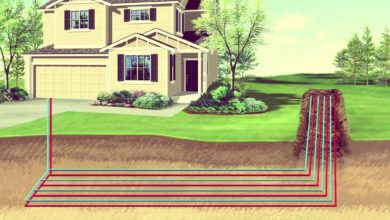What are ceiling fans? The answer is pretty simple. They are fans that are mounted to the ceiling. Simple and straightforward. In this article, our areas of interest are how they work and why anyone would want to have one.
For an easy flow, we will break this up into two segments. First, we will look at how they work after which we will look at why you should have them
How Ceiling Fans Work
Have you ever wondered how a ceiling fan works? You sit quietly looking up at it wondering how every component of it works together to cool a room or space. Well, let’s delve into the topic and see if we can discover the inner workings of a ceiling fan.
To the layman, a ceiling fan simply involves a motor and blades that spin to move air around, cooling the room. Well, it is a bit more than this. Actually, it is a lot more than this. First, the ceiling fan does not cool the room. It simply pushes air down towards you and this air cools you, making you feel that the room is cooler. If you were to check the temperature of the room, you will find that it to be unchanged.
Wait a minute! Why exactly should I be concerned about how a ceiling fan works? If you just asked yourself this question, then consider this: when you know how something works, it is easier for you to know what to look out for when choosing one. We hope that’s good enough reason for you to want to know how a ceiling fan works.
Back to our discourse…
It may interest you to know that modern ceiling fans incorporate aspects of aerodynamics in their designs to achieve higher efficiency. This especially has to do with the design of the blades.
Of course, the ceiling fan has the motor that spins the blade but the actual air movement is carried out by the blade. It is for this reason you should pay close attention to the blade of a ceiling fan you wish to purchase.
To circulate air, the blade of the ceiling fan has to be slightly angled out of the plane. The direction of the blades’ spin will then determine if the air movement will be upward or downward. Modern ceiling fans offer the option of switching the direction of the blades’ spin to allow you choose the direction you want the air moved in.
When the weather is cool and you need some warmth circulated, you will want the ceiling fan blowing upwards towards the ceiling where you have warmer air. As it blows in this direction, the warm air is forced down and in the process mixes with the cooler air, thereby circulating the warmth faster. In most cases, however, ceiling fans are set to blow downward.
Here are a few things to note when looking at the ceiling fan’s blades:
- More blades do not necessarily improve the air flow that your ceiling fan will generate. Each time a blade cuts through the air, it causes some turbulence. For efficiency, the next blade should not have to cut through a turbulent air but a smooth one. The more the blades a ceiling fan has, the more likely it is for each blade to be cutting into the turbulence caused by the preceding blade. What this leads to is increased noise with less air flow. Three blades are okay with five being the maximum you should consider.
- The size of the blade is very important. We tend to love big things and seem to think that the bigger it is the better it will operate. Well, bigger ceiling fan blades will mostly yield a noisier operation. If you really want to go for speed and the best airflow possible, then go for slim blades.
- Blades with slightly turned up tips offer more efficiency as they prevent the escape of air to the top surface from the bottom surface. You may not find this in most ceiling fans for home use but if you do find one with such a design (copied from an airplane’s wings), go for it as it will be more efficient.
- Lastly, look for fans with smooth blades. Blades with rough surfaces (whether as a design or something else) reduce the efficiency of the blade.
We have focused mainly on the blades because those are the things that really affect the air flow. Now let us look at some reason why you should get a ceiling fan.
Why You Should Get A Ceiling Fan
There are some important benefits of having a ceiling fan. We will list some of these now so you can decide for yourself if it is indeed worth having.
- Ceiling fans can make your room or space appear cooler. While it does not actually reduce the temperature in a space, the downward draft of the air cools your body, making it appear as if the room is cooler. This being the case, you may not need to use your air conditioner and this will help you save on your energy bills.
- Ceiling fans are very helpful during the cold months. When you put on your heater and switch the direction of the ceiling fan so it blows upward rather than downward, the upward push of the air forces the warm air above down. This means it helps ensure that warmth is better circulated.
- With warmth being better circulated as the ceiling fan blows upwards towards the ceiling, your heating cost is reduced as a result of the increased heating efficiency brought about by the ceiling fan.
- The ceiling fan can also be used as a decorative fixture, adding aesthetic value to your home or any space where it is installed.
- Ceiling fans can help keep away flying pests. The downward draft of the air from the ceiling fan can destabilize them in their flight, causing them to steer clear of the ceiling fan’s area of coverage.
- Unlike standing fans and other types of fans, it is way out of the reach of any child or even pets. This makes them very safe as no child is in danger of putting their hands into it or pushing it over. It is a safer option.
Conclusion
We have looked briefly at some aspects of how a ceiling fan works and we have also looked at some benefits that can be gotten from having one. It is now up to you to look at this information and see a reason why you should get a ceiling fan immediately.





